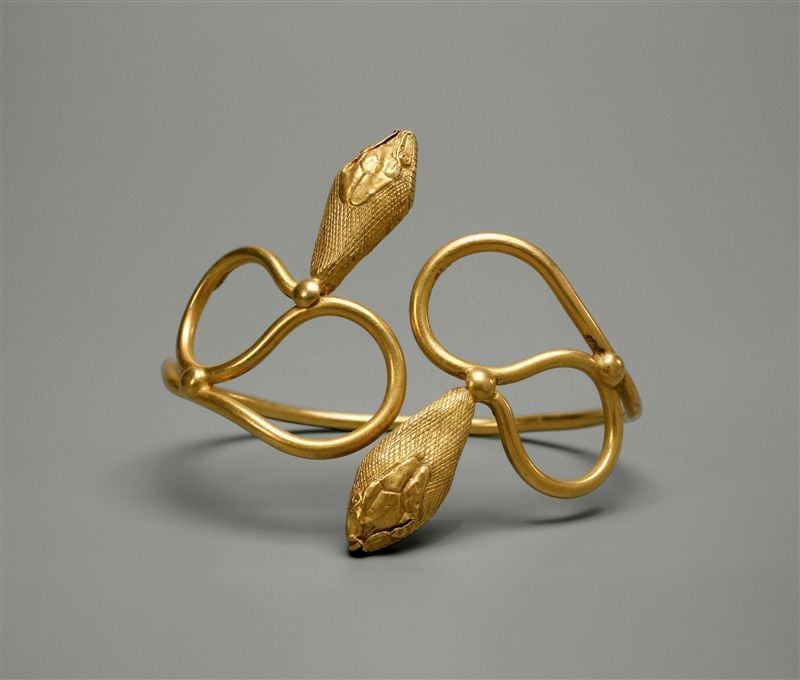The art of jewelry-making has a long and rich history, with the ancient Egyptians being one of the masters of the craft. One of their most sought after creations was the gold snake bracelet, which was widely popular in antiquity. These bracelets were made of hollow and smooth gold, and the intricate details of the snakes’ scales and head were chased after casting.
Worn coiled around the wrist or upper arm, snake bracelets were often seen in pairs and were considered a fashion statement in both the Greek world during the Classical and Hellenistic periods.
Jewelry served a dual purpose in ancient times, with its primary function being protection. Precious metals and stones were believed to have magical and symbolic properties, and the cutting and setting of semi-precious stones was a highly valued skill.
The creation of these gold snake bracelets required simple tools, such as a terracotta crucible, a brazier, and a rush reed fitted with a clay tip. The gold was melted and poured into molds or hammered into sheets, which were then embossed and chased to produce intricate designs and low reliefs.
This particular gold snake bracelet dates back to the Ptolemaic Period, approximately 305-30 BC, and can now be found in the Royal Museum of Mariemont in Morlanwelz. It serves as a reminder of the incredible skills and artistry of ancient jewelry-makers and the timeless beauty of their creations.







